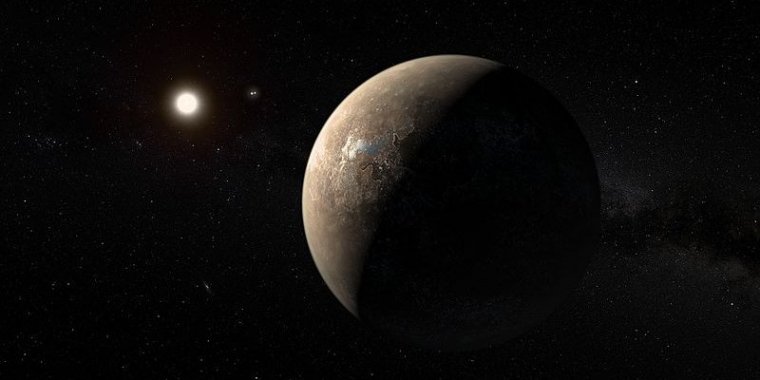| News / Space News |
Simulations show planet orbiting Proxima Centauri could have liquid water
A team of scientists led by Ian Boutle at the University of Exeter have created successful simulations of two possible atmospheres of Proxima B, an exoplanet orbiting Proxima Centauri, one a simple atmosphere of nitrogen tinged with carbon dioxide and another an Earth-like mix of gases. They found it possible that liquid water, a prerequisite for life as we know it, might exist on parts of the planet.

Artist's representation of Proxima B as an arid but not waterless rocky exoplanet. ![]()
Proxima B is believed roughly Earth-sized and in its solar system's habitable zone, meaning it would have similar gravity to Earth and at least the possibility of liquid water.
The exoplanet was discovered in August 2016 about 4.2 light years from Earth. Last year, NASA put out a statement expressing doubt that the planet could have an atmosphere in the sense that most of us understand it: "Considering the host star's age and the planet's proximity to its host star, the scientists expect that Proxima B is subjected to torrents of X-ray and extreme ultraviolet radiation from superflares occurring roughly every two hours."
One of the main features that distinguishes this planet from Earth is that the light from its star is mostly in the near infra-red. These frequencies of light interact much more strongly with water vapour and carbon dioxide in the atmosphere which affects the climate that emerges in the model.
This new model allowed scientists to evaluate the effects of Proxima B's possible orbits and likely exposure to radiation and solar flares from its red dwarf sun on two types of atmospheres.
The specifics of Proxima B's orbit are not yet established. It might rotate around its axis quickly the way Earth does or it might be tidally locked to its sun, with one side of the planet always lit and the other always dark. It might have a near-circular orbit or an elliptical one. All these variations would have different effects on the flow of any gases over its surface.
The models review two possible orbits: one tidally locked and one modeled after Mercury's, with a slow-rotating three days per year. (Wikinews)
YOU MAY ALSO LIKE




